 |
| Name:
Republic of Haïti |
| At a Glance |
| Geography |
| Capital:
Port-au-Prince |
| Population:
6,867,995 |
Total Area:
10,714 sq.mile
(27,750 sq. km) |
| People |
Ethnic groups:
95% Black, 5% mulatto,
Arab and European |
Languages:
French ( official, but spoken by 20% of population) all
speak creole |
Religions:
80% Roman Catholic—of which majority also practice
Voodoo, 16% Protestant |
| Economy |
Monetary Unit:
Gourde |
Revenue Per Capita:
$1,340 |
Major industries:
Sugar
refining, textiles, flour, 66% agriculture, 25% services,
9% industry |
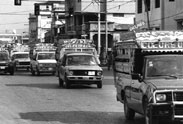 |
Labor force:
Abundant unskilled labor. 60% unemployment |
Major trading
partners:
US
(80% Exports / 60% imports) EU (11% Exports / 12% imports) |
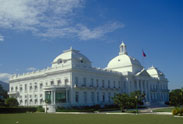 |
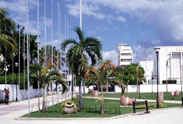 |
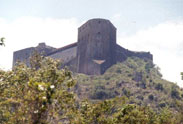 |
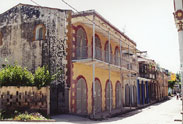 |
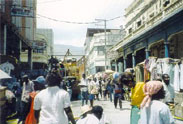 |
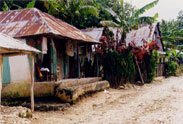 |
|
| Brief
Historical Context |
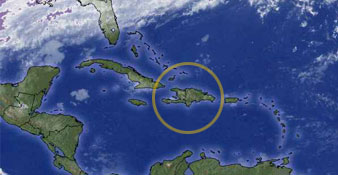 |
The
conquest of the Arawak Island of Haiti in 1492 by Christopher
Columbus brought about the elimination of its aborigines
and the onset of slavery with the importation of blacks
from Africa. Thus began a colonial era on this part of
the world, first with the Spaniards who ruled the entire
island (which they renamed Hispaniola). Then came the
French and later the English, each with their own style
to seek wealth and power. After years of struggle among
themselves, Spain conceded the western portion of the
island known as Saint-Domingue to France with the Treaty
of Ryswick in 1697.
This era of slavery lasted three hundred years until the
blacks of Saint-Domingue rose against their French colonial
oppressors. Led by Boukman, a Jamaican-born slave, the
revolt started in 1791 and continued with Toussaint Louverture,
a former slave himself, renowned for his military genius.
The rebellion ended in 1804 with Jean-Jacques Dessalines,
another former slave, who led the final struggle for the
country’s independence. Dessalines’ troops
defeated Napoléon Bonaparte’s powerful army and
gave birth to a new, free nation known as Haiti—the
first black republic in the Western Hemisphere.
Isolated by the world powers of the time, which viewed
the formation of this new nation as a threatening example
to their colonies, Haiti never capitalized on the gains
of that revolution. This young nation witnessed a succession
of autocratic governments which ended with the American
Occupation of 1915-1934.
The post-American years brought about seeming stability
that lasted through the 1950’s, until François Duvalier,
better known as Papa Doc Duvalier, took the oath of office
in 1957 as president of Haiti, presumably for six years.
This event, benign in appearance, was about to change
the destiny of this entire nation.
Papa Doc Duvalier terrorized the whole country for fourteen
years. When he died quietly in the National Palace in
1971, Duvalier passed to his son, Jean-Claude, Baby Doc
a legacy of violence. The era of the Duvaliers, father
and son, lasted three long decades.
Characterized by a total absence of honesty, decency,
and human dignity, a period of decadence permeated all
aspects of the Haitian society. The Duvalier regime left
the nation with an absence of talented, competent, and
honest leaders, as well as a vacuum within the political
scene which is still being felt today and will prevail
for decades to come!
Excerpt
of Fort-Dimanche, Dungeon of Death, page 5. |
|
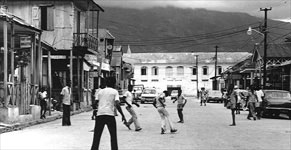 |
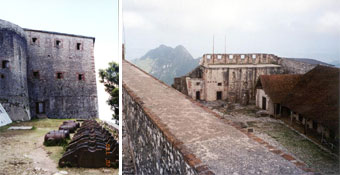 |
| |
| |
|